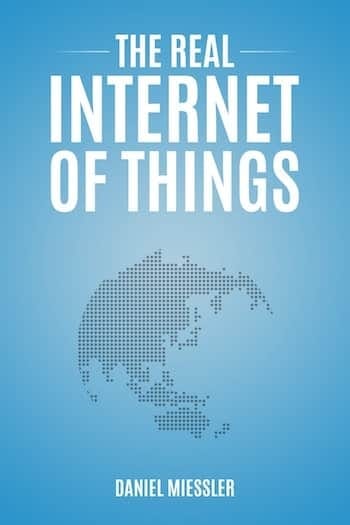The Real Internet of Things: What Does It All Mean

These are published chapters from my book The real Internet of Things, published on January 1st, 2017.
So we’ve talked through the various concepts. But what does this all get us? How is this the future of technology and humanity?
There have been three main themes throughout this book:
That we can predict the future of technology through our understanding of what humans ultimately want as a species.
That human-to-technology interface is about to fundamentally change by abstracting technology behind natural interfaces.
That we’re moving towards a bottom-up and evolution-based model vs. one that’s top-down and design-based.
Prediction
We cannot know what technology will be capable of in the future, but the more we understand ourselves the more we will know exactly how it’ll be used. That dynamic is the key to our predictive power.
We are the imperfect pothole, and technology is the puddle inside. Know the shape of the container and you’ll know the shape of what fills it.
Given that perspective, technology is perhaps best defined as:
An artificial layer of abstraction that converts an entity’s desire into reality.
Technology is what fills the gap between the world we have and the world we want, and in that sense it is far more predictable than most realize.
Interface
With regard to interface, the future of technology is one where technology usage becomes more natural, more invisible, and completely abstracted. Poking at applications applications with fingers or keyboards is identical to running clothes up and down a washing board—in a river.
We’re not just moving to a model where humans interact with their computers via voice, text, and gestures—that’s a small detail in the larger point.
What we’re moving toward is a model where humans don’t really interact with computers at all. Instead, humans will interact with assistants who then interact with computers on our behalf. It’s mediation. It’s abstraction. It’s humans simply wanting or needing things, naturally communicating those needs implicitly, or explicitly, and having those things simply happen.
The world becomes transparently curated and reconfigured around us according to our preferences.
Evolution
Finally, daemonization will unify a person’s identity into a single source of truth that lives where it should: with you.
Instead of being the fleshy, abstracted subject of thousands of imperfect databases, you will become the single authority for who you are, your realtime state, what you care about, and how you prefer to interface with everything else.
It will allow us to know the state of the world in realtime, to parse that information continuously, and to use technology to shape our lives according to our values.
This not a technology upgrade, it’s a humanity upgrade.
It’s knowledge of, and connection with, all other objects through our respective daemons—allowing you the ability to create and exchange value in realtime.
It will transition us from a model where institutions slowly and imprecisely interact with other institutions about us, to a model where we interact and exchange value with each other.
This is the real Internet of Things.